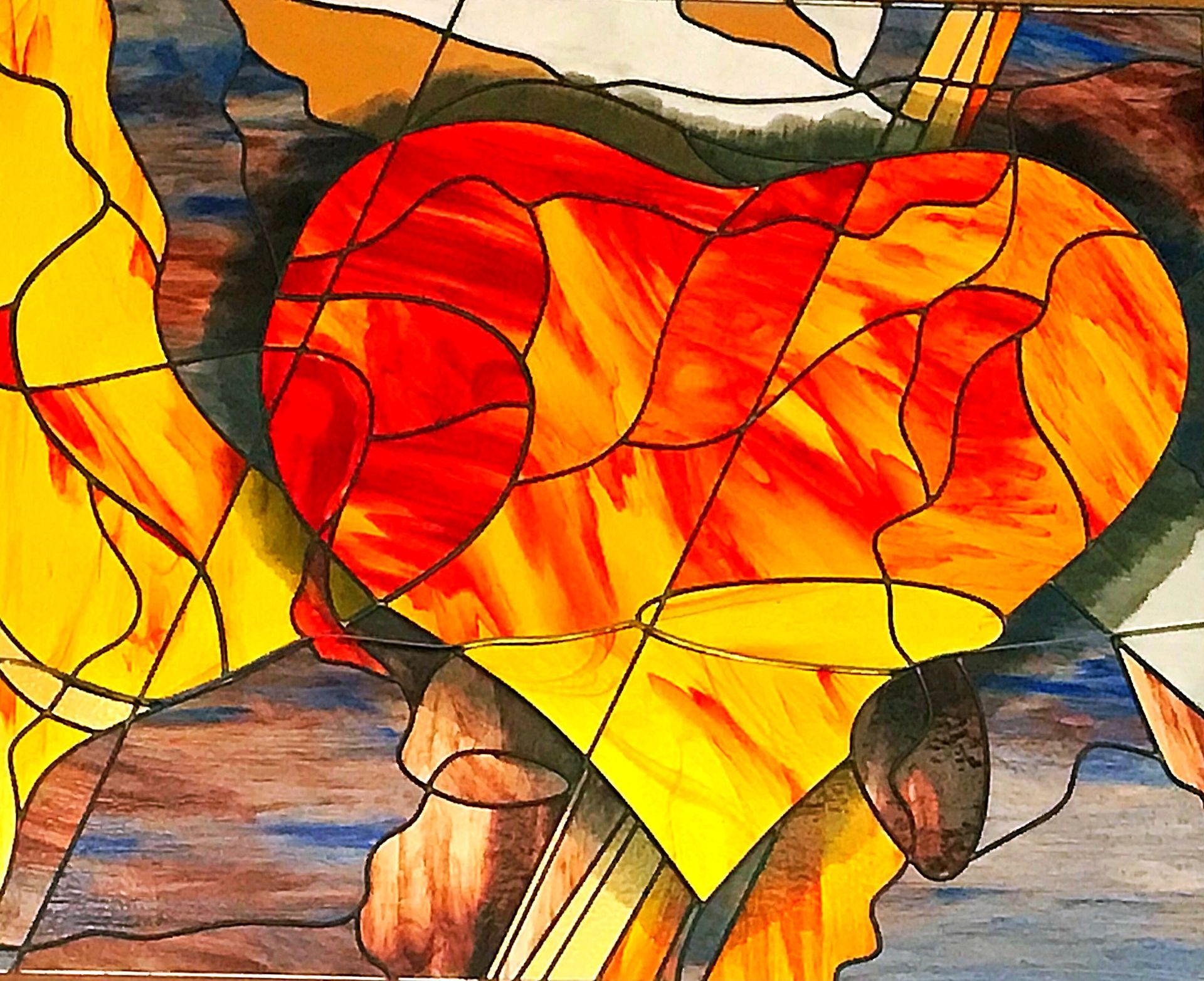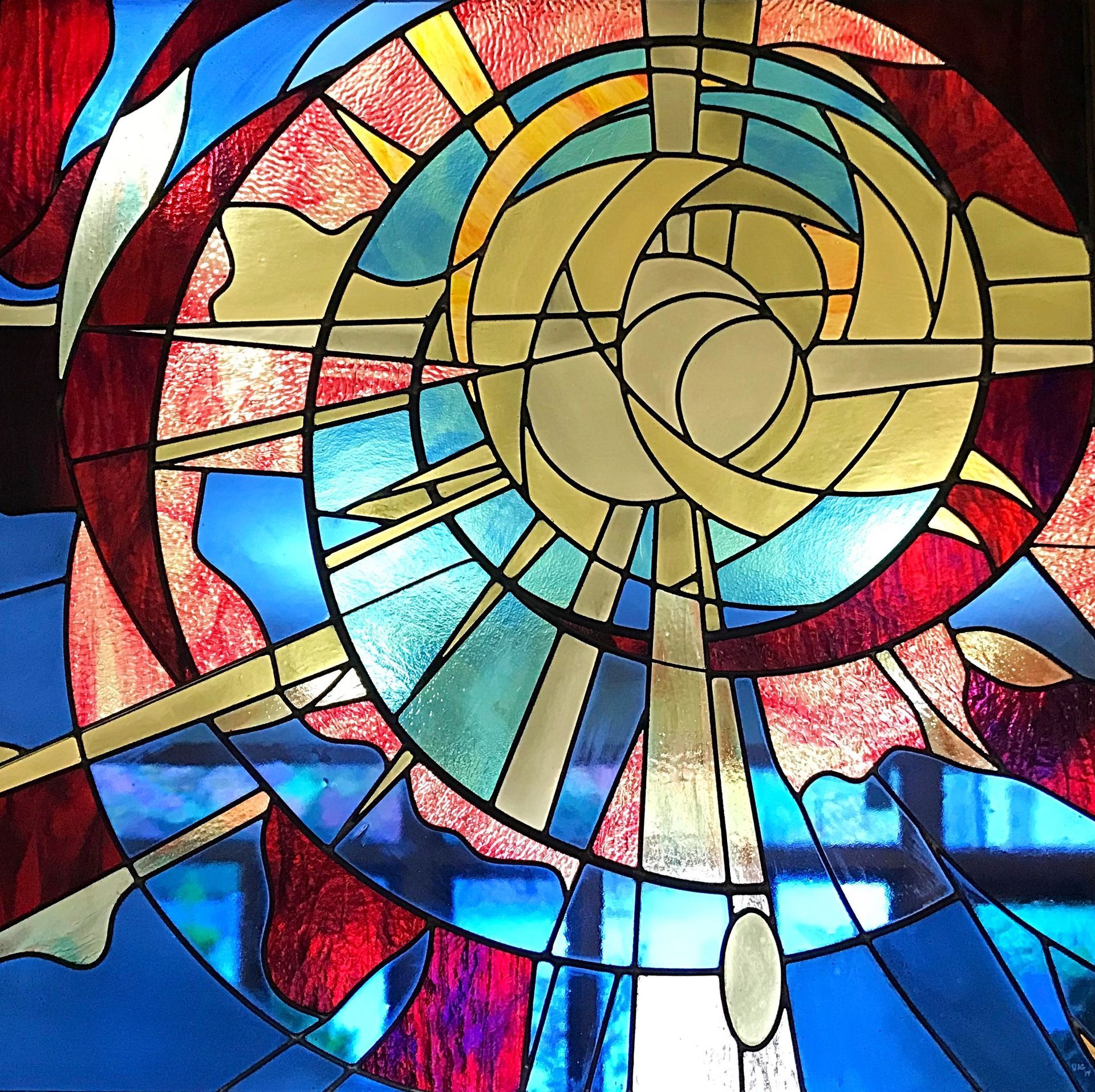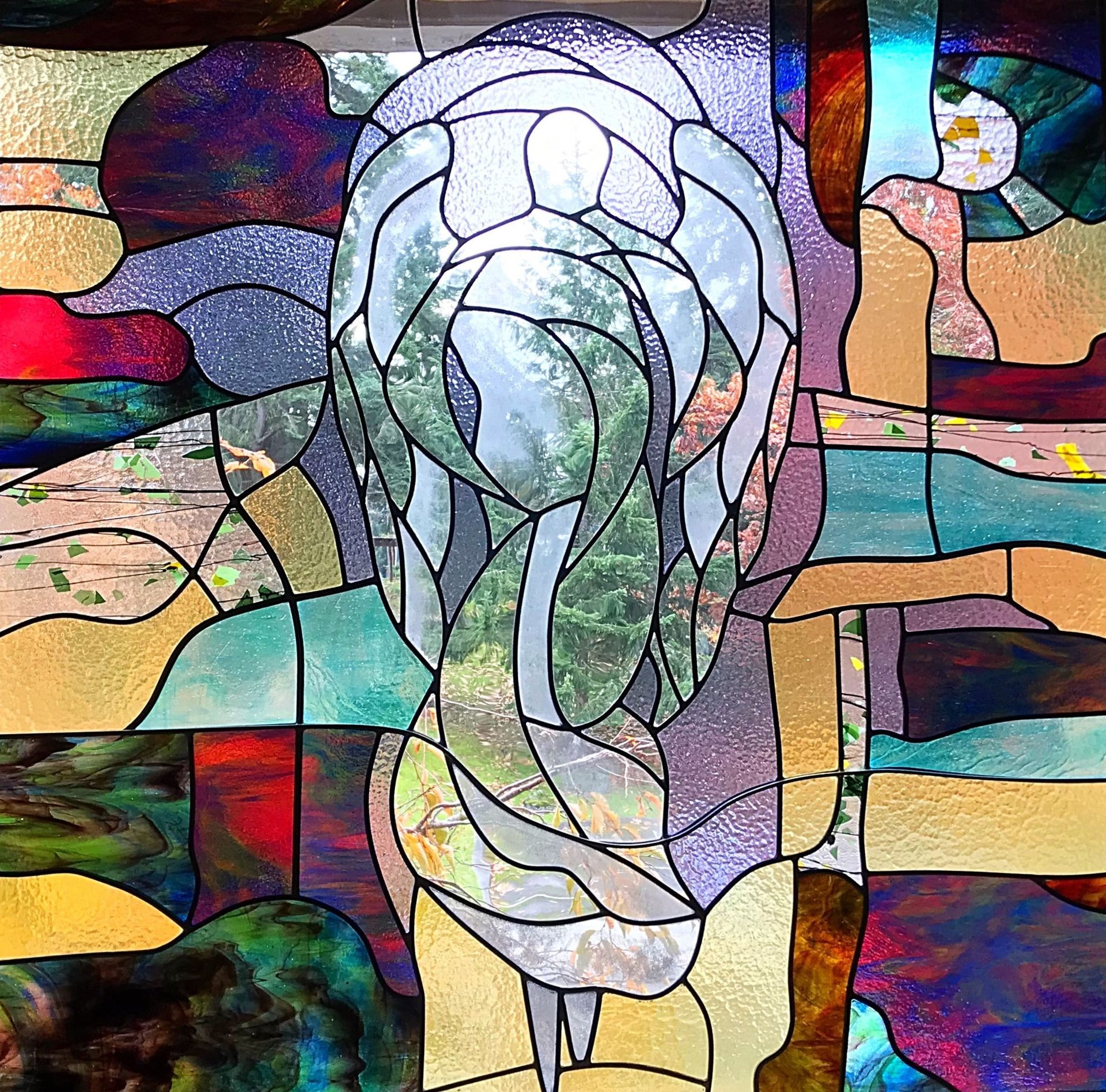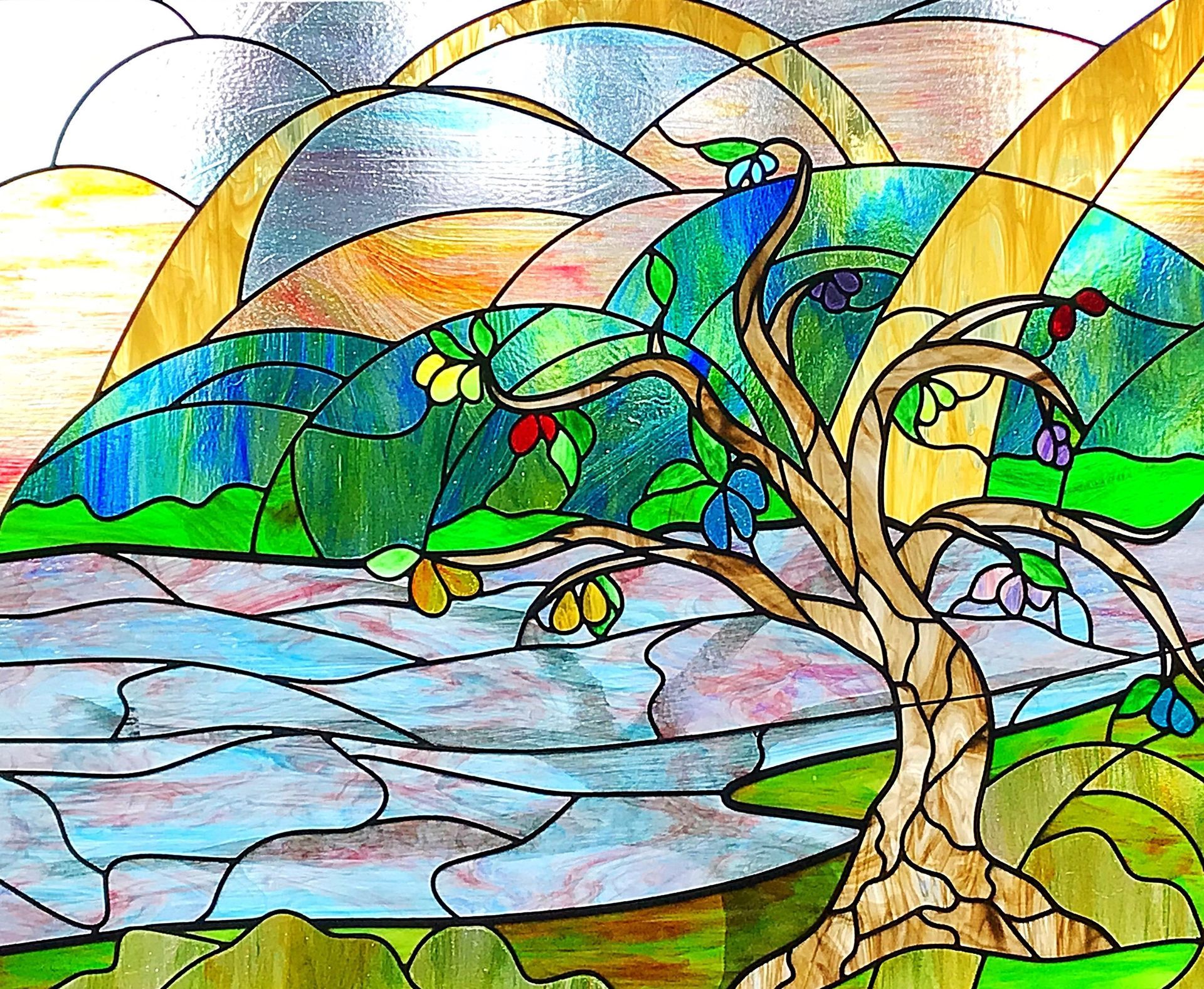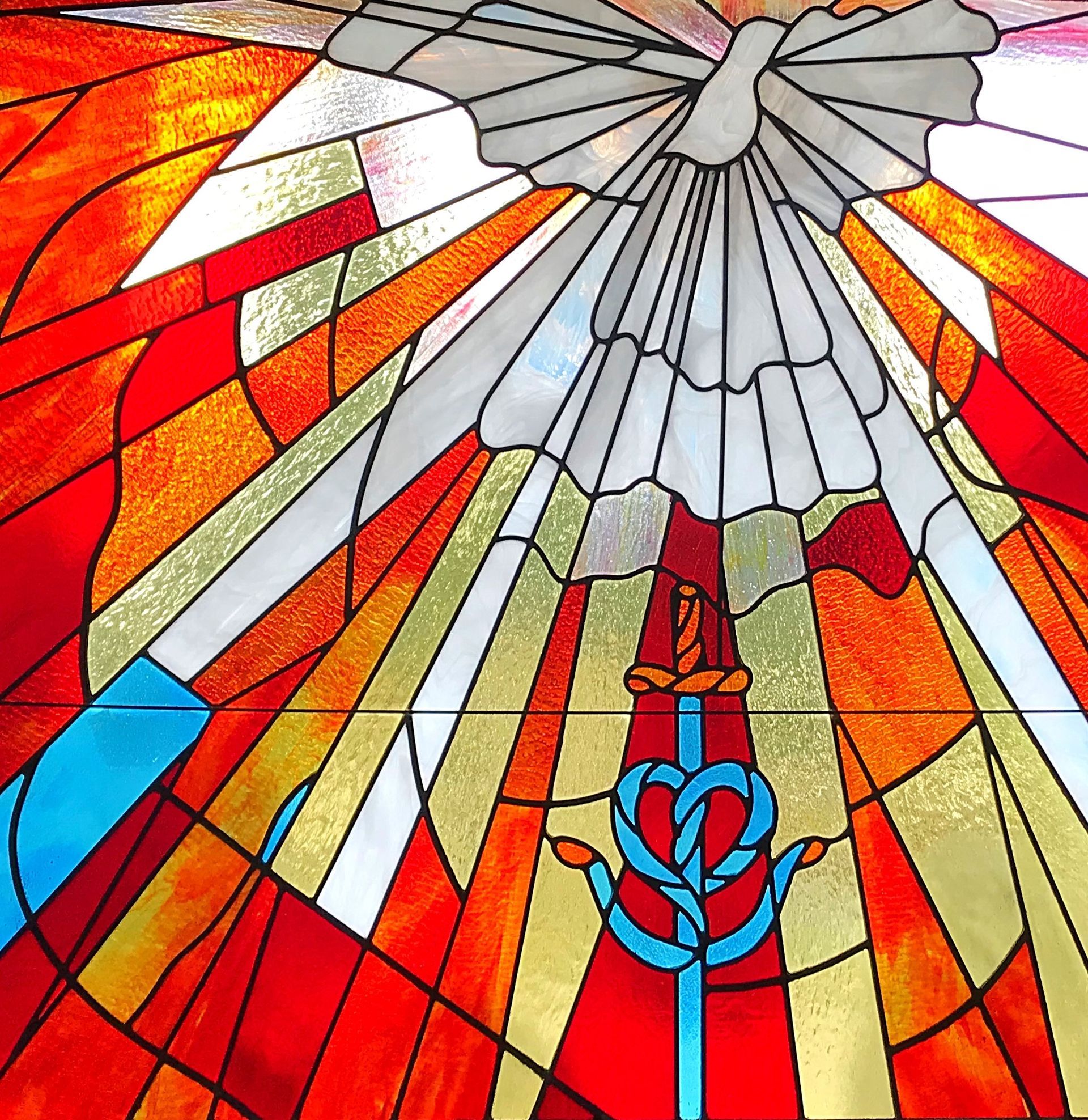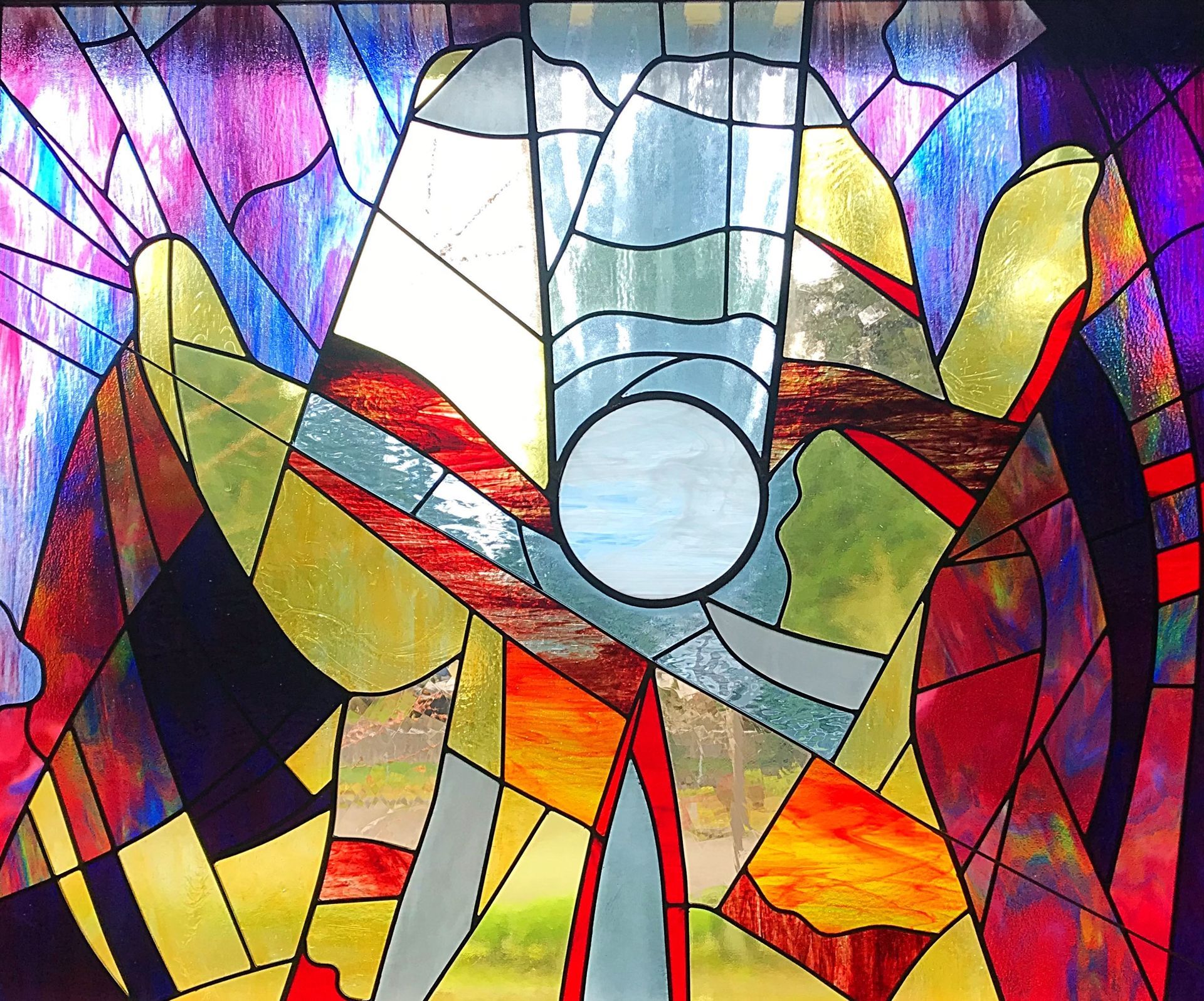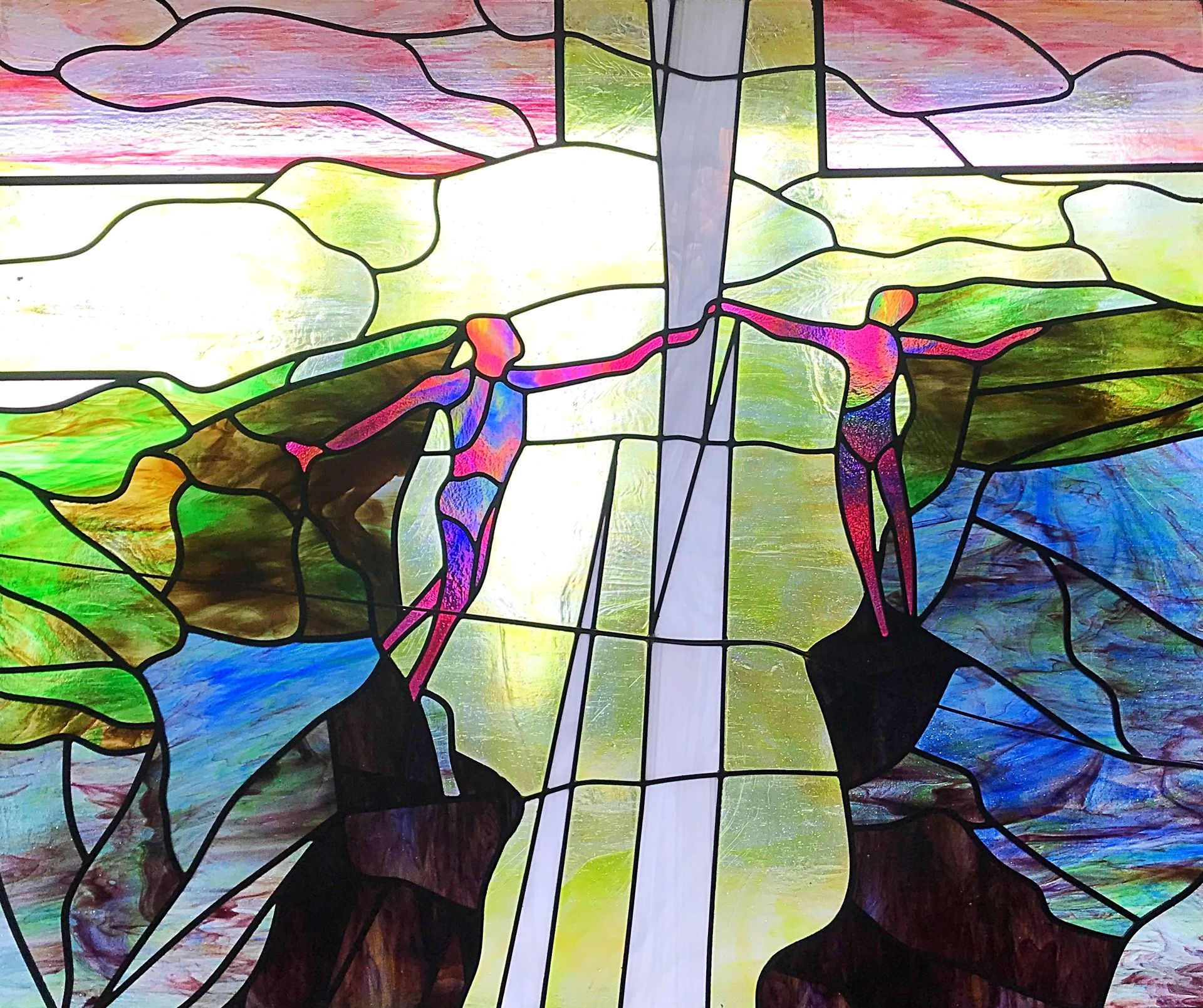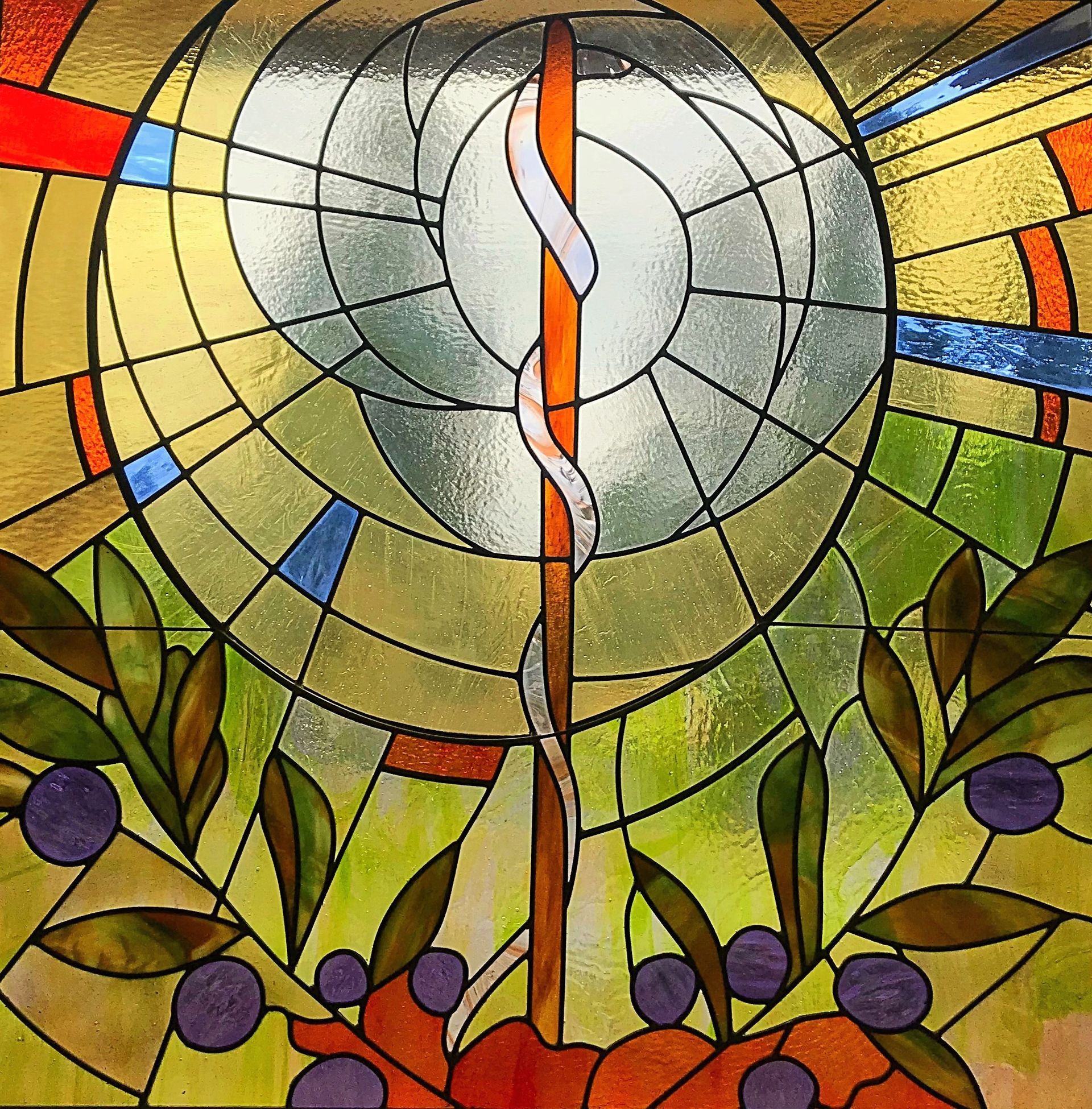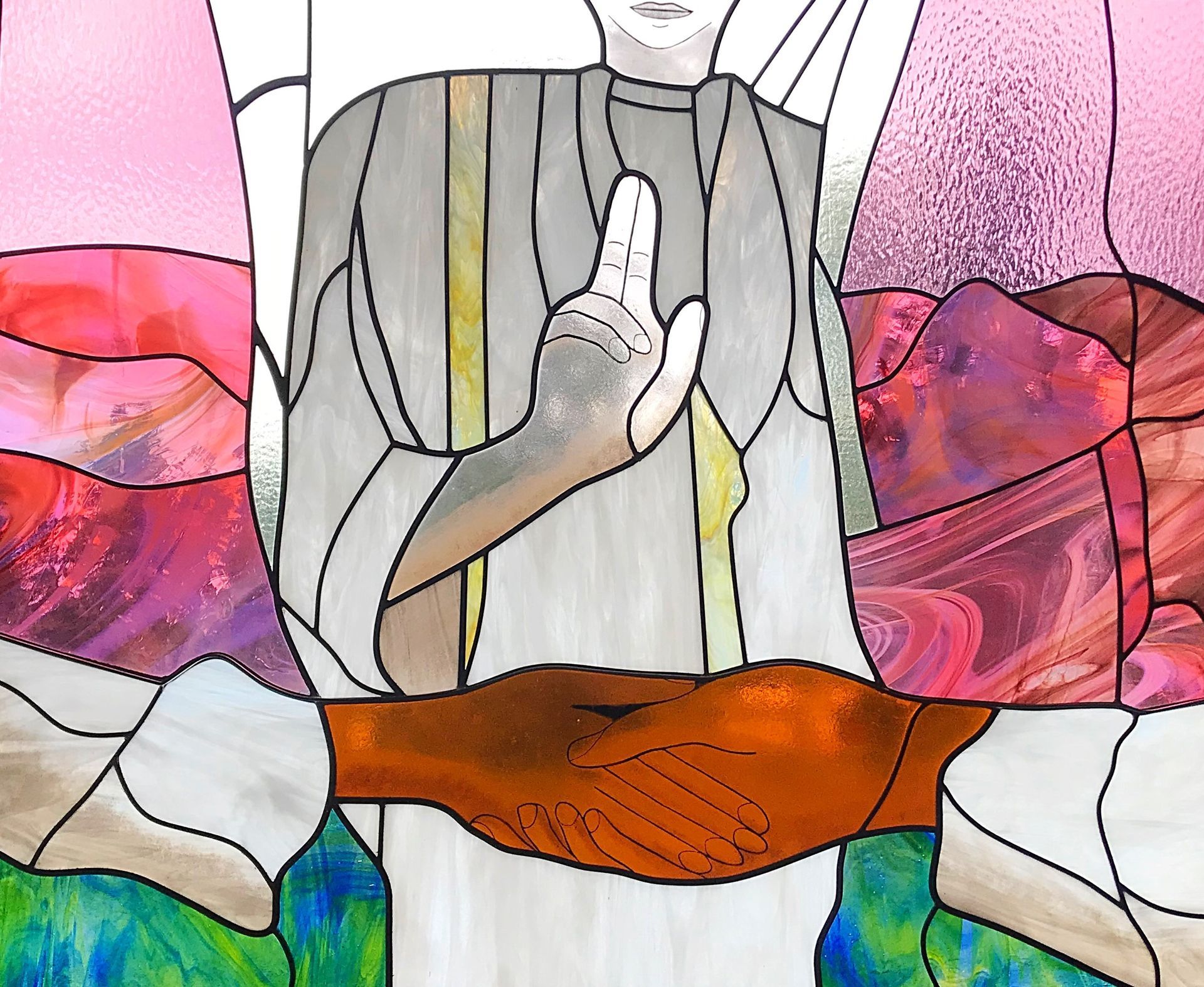Stained Glass
The Windows of
St. Vincent de Paul Church
Through which we see something of the Divine
The Transcendence and Immanence of God
The church’s 10 lower windows deal with the tension between the transcendence and immanence of God.
St. Augustine once said that if you think you understand God, then what you understand is not God.
God is incomprehensible, beyond the human ability to know.
As it says in Isaiah 55:9,
“For as the heavens are higher than the earth, so are my ways higher than your ways,
my thoughts higher than your thoughts.”
Yet, at the same time, God reveals himself to humanity, most especially
in and through the life, death and resurrection of Jesus of Nazareth.
The crucified and risen Jesus is still present to his Church.
He is Emmanuel: God with us. We must live in the tension with a
God who is beyond us and the same God who is with us.
The Transcendental Qualities of God
The transcendence of God is closely related to God’s sovereignty — God is distinct from all he has made; he transcends it all: “For you, O LORD, are the Most High over all the earth; you are exalted far above all gods” (Psalms 97:9; cf. 108:5). St. Paul says there is “one God and Father of all, who is over all and through all and in all” (Ephesians 4:6).
St. Thomas Aquinas listed the transcendental qualities of God as Unity, Beauty, Goodness, and Truth.
The four windows on the south wall incorporate these themes,
qualities that are seen as the ultimate desire of the human heart.
The Immanent Qualities of Love
What is the immanence of God? The literal meaning is “to be within” or “near” in relation to God’s creation.
God is always present within the universe as its sustaining cause.
“‘Am I only a God nearby,’ declares the LORD, ‘and not a God far away?
Can anyone hide in secret places so that I cannot see him?’ declares the LORD. ‘
Do I not fill heaven and earth?’ declares the LORD” (Jeremiah 23:23-24).
“In Christ all things hold together” (Colossians 1:17).
God’s presence does something and empowers us to do something. The sacraments of the Church, which trace their origin to the ministry of Jesus, continue the Lord’s saving action in our lives, revealing the presence of the divine.
The six windows on the north side of the church focus on what happens when God, or Love, is present:
Love gives life (baptism); emboldens (confirmation); unites, gives and receives (Eucharist);
reconciles (penance), heals (anointing of the sick); and serves and commits (marriage & holy orders).







